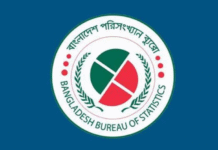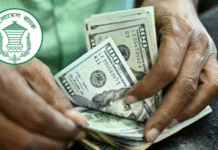
It was the economic reforms that China adopted in 1978 that kicked off its exponential economic advancement. Over the next four years, China emerged as a major economic power of the world. Even in 1991, around 40 per cent of China’s population was poor. And now that very same China has the world’s largest middle class.
There has been a lot of research on the role of the middle class in China’s development. Renowned journalist and former editor of the Time Magazine, Jim Frederick, back in 2002 wrote, China’s growing middle class holds the key to its future.
How vital is the role of the middle class in economic development? Nobel prize winning economists Abhijeet Banerjee and Esther Dufflo in 2007 carried out a research on the world’s middle class. They pointed to three contributions of the middle class in economic development: 1. Entrepreneurs, in general, mostly are from the middle class. They increase productivity and create employment. 2. Middle class values place importance on human capital accumulation and savings, which are the main components of economic development. 3. The middle class consumes relatively more than the poor and are willing to pay a bit extra for quality productions and services. Accordingly, the demand created by the middle class in the market, helps in increasing investment.
Researchers and economists feel that the middle class also have an important role in establishing better governance. In comparison to the poor, they demand better public service and demand accountability and transparency from government officials. They also support policies that promote growth. It is the middle class that expands the domestic market.
The Elephant Curve
The Serbian-American economist Branko Milanovic is known for his work on income distribution and inequality. He and Christopher Lakner, using data from 1988 to 2008, carried out a research recognised globally as one of the most significant research work of the last decade. In the research, ‘Global Income Distribution: From the Fall of the Berlin Wall to the Recession,’ published in 2013, they used World Bank data to show that in these 20 years, it was the ultra rich and the middle class who were the big winners. The income increased the middle class basically in East Asia’s China, South Asia’s India and a part of Sub-Saharan Africa. And the ultra wealthy lived in Europe and North America. They said that the income of one per cent of the world’s wealthiest had increased by 60 per cent and the world’s middle class had increased by 70 to 80 per cent.
Lakner and Milanovic’s graph pertaining to income and inequality is known as the ‘Elephant Curve’. Even economists like Thomas Picketty later worked in the basis of this graph. While Milanovic used data of up till 2008, Piketty used data of up till 2016. Of course, in 2021 a lot of the calculations have been muddled.
Who are the middle class?
There is no specific definition of the middle class. However, based on their income, the people of the world are generally divided into five categories. These are: Poor, low income people, mid income people, higher mid income people and high income people.
Those who earn less than 2 dollars a day are globally recognized as poor. Those who earn 2.01 dollars to 10 dollars a day are low income people. Those earning from 10.01 dollars to 20 dollars a day are middle income people. Those with an income of 20.01 dollars to 50 dollars a day are high middle income people. And those earning over 50 dollars a day are high income people. But this definition changes from country to country. This income is on the basis of purchasing power parity (PPP).
Middle class decreases for the first time
And now, for the first time since the nineties, there had been a worldwide decrease in the middle class. The Covid pandemic has brought the progression of the middle class to a standstill. The US-based Pew Research Centre states that due to Covid-19, the world’s middle class has dropped by 90 million and the number of poor people has increased by 131 million.
According to the Pew Research Centre, the Covid pandemic has had a deep impact on the global economy. Growth has decreased worldwide. Economic recession has caused a drop the standard of living globally. And with the drop in income, a large chunk of the world’s middle class have been pitched into poverty. The largest percentage of the world’s middle class live in East Asia and then in South Asia. The most of them live in the biggest country of East Asia, China, and the biggest country to South Asia, India.
Statistics show that from 2011 to 2019, the number of middle class people increased from 899 million to 1.34 billion. That means every year the middle class rise by 54 million. In the same time span, the number of poor people decreased on average by 49 million annually. High income people in this period went up from 459 million to 570 million. That means, on average, the number of wealthy people went up by 15 million per year.
South Asia hit hardest
Before the pandemic, the highest number of the world’s poor lived in Sub Saharan Africa, at 474 million. Coming up second was South Asia, with a poor population of 104 million. And the highest number of middle class was in East Asia, at 672 million. Next was South Asia where the middle class totaled 123 million.
Bangladesh’s middle class in dire straits
Director general of Bangladesh Institute of Development Studies (BIDS), Binayak Sen, had carried out a study in 2015 on Bangladesh’s middle class. According to the figures then, Bangladesh’s middle class constituted 20 per cent of the country’s population, that is, 35.8 million. The research projected that by 2030, one third of the country’s population would be middle class.
The research also said that in 1992, only 9 per cent of Bangladesh’s population was middle class. Around two decades later, the middle class more than doubled. The growth of the middle class led to speedy poverty alleviation. Development became sustainable.
However, in an interview with Deutsche Welle in July 2020, Binayak Sen said we consider those above the poverty line to be middle class. Those who have a daily earning of 2 dollars to 4 dollars are in the middle class. In our context, we can consider families with a monthly income of Tk 40,000 to Tk 80,000 as middle class. So before Covid, Bangladesh’s middle class had nearly reached 30 per cent.
The US-based multinational research institute, Boston Consulting Ground (BCG) in 2015 carried out a research on Bangladesh’s middle class from a market and demand angle. It said there that the economic capacity of the middle class in Bangladesh is increasing. Every year 2 million people were being added to the middle class. The number of solvent and upper class people were increasing at an equal rate. So Bangladesh had become a huge potential market for fast moving consumer goods (FMCG). And the middle class in Bangladesh was increasing by 10 per cent annually. By 2025 the number of middle class people would triple to 34 million.
China is rapidly overcoming the impact of Covid. And because of them, while East Asia had the highest number of middle class, there will hardly be any significant change. So, it seems, South Asia is the region hardest hit by the pandemic
Covid has changed everything. In 2000 in Bangladesh, 48.9 per cent of the people would live below the poverty line. In 2005 this had dropped to 40 per cent. The rate of poverty had fallen steadily since then. Before Covid, according to official records, the rate of poverty had been 20.5 per cent. There is no official account of how many people have fallen into poverty anew. However, according to the non-government research institute SANEM (South Asian Network on Economic Modelling), 42 per cent of the population is now poor. That means, Covid has taken Bangladesh around 20 years back.
It is basically people from the middle class that have fallen into poverty. The expectations that based economic advancement of the growth of the middle class, have taken step back. The question is, how far will the government be able to take up the challenge of changing its conventional policies to adapt to the situation and turn the economy around?
How serious has the impact of the pandemic been? According to the Pew Research Centre, the number of poor in South Asia will increase by 78 million and in Sub Saharan Africa by 40 million. The question is, where will all these poor people come from in South Asia? Basically, all of them had entered the middle class bracket but are becoming poor again with the decrease in their income. For instance, due to the impact of the pandemic, the middle class in South Asia will fall by 32 million and in East Asia by 19 million. China is rapidly overcoming the impact of Covid. And because of them, while East Asia had the highest number of middle class, there will hardly be any significant change. So, it seems, South Asia is the region hardest hit by the pandemic.
*This column appeared in the print and online edition of Prothom Alo and has been rewritten for the English edition by Ayesha Kabir









